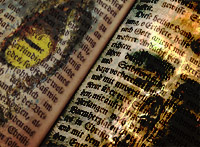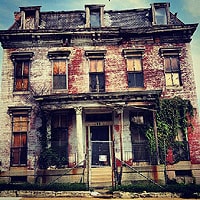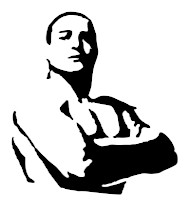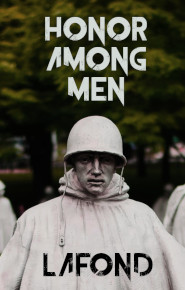“Know, oh prince, that between the years when the oceans drank Atlantis and the gleaming cities, and the years of the rise of the Sons of Arуas, there was an Age undreamed of, when shining kingdoms lay spread across the world like blue mantles beneath the stars - Nemedia, Ophir, Brythunia, Hyberborea, Zamora with its dark-haired women and towers of spider-haunted mystery, Zingara with its chivalry, Koth that bordered on the pastoral lands of Shem, Stygia with its shadow-guarded tombs, Hyrkania whose riders wore steel and silk and gold. But the proudest kingdom of the world was Aquilonia, reigning supreme in the dreaming west.”
-Overture to the Conan Stories
Was Robert E. Howard a hater of blacks?
Was Robert E Howard a hater of women?
Did Robert E. Howard, through his brief but furious life’s work, promote the idea that white men were morally superior to women and men of the “colored” races?
Before we continue let us take a look at an old review of the most popular Conan story, a story that brings these two strands together in the mind of Howard. The following is excerpted from A Thousand Years in His Soul: Book One—The Poets
Howard’s Awful View of Life
Queen of the Black Coast by Robert E. Howard
This review of Queen of the Black Coast is broken into five parts, mining the contents of each of the five chapters in this novelette for the substrata, in particular the nature of the Conan character and the importance of Belit to the mythic barbarian and Howard’s awful view of life.
‘The Wildest She-Devil Unhanged’
The story of Conan and the pirate queen begins with a look at “civilized” life from the perspective of an honorable savage. Conan forces his way onboard an outgoing merchant galley one step ahead of the corrupt law. He befriends the captain and tries to defend the small ship against the “Tigress” a predatory war galley commanded by Belit. Belit is a pirate queen that is ethnically supposed to be of a pre-Berber tribe, who commands black pirates who worship her ‘like a goddess’.
The interesting thing here as that, when the Arab-Islamic invaders swept across North Africa the staunchest resistance they encountered came from Berber tribes who were ruled by a warrior queen. I would bet that Belit is a composite of that Berber queen, a Chinese pirate queen of the 19th Century, and Bonnie the psychopath gangster of Howard’s own time. Howard’s treatment of race is often overlooked, and he is assumed to have harbored a typically negative view of blacks for a man of his time, race and locality. He is also widely assumed to have been misogynistic as well. A nice example that refutes both prejudices comes in the following line, “…she knew she had found her lover, and his race meant naught…”
It is significant that Belit is the only love of Conan’s 25 story career, and that Howard was a bachelor who is thought to have only loved one woman. Conan has no qualms about helping Belit with her anarchist crusade against the entrenched powers of the age. In case you were impressed or horrified by the 1970s film Excalibur, when Euther committed the sexist crime of armored intercourse, Chapter One closes with Conan doing the same, but with considerably more encouragement from the lady beneath him.
‘Dark Jewels Burning in the Moonlight’
For the time period of its composition Queen of the Black Coast is absolutely scandalous: a naked mixed-race woman leading a crew of black pirates, and, more troubling, directing a white man! Howard states that ‘hers was the mind that directed’ and ‘his the arm’ that carried out the directions. This had to be written as fantasy—could have never been released as a historical or oriental adventure.
As Belit rashly looks for a city to sack up a poisonous river of death, she engages Conan in a discussion as to his religious beliefs and superstitions, revealing herself to be something of a crazed witch. Much of Conan’s cultural back-story is fleshed out in this conversation. At this point Howard is at his horrific best where the setting is concerned, and Belit is beginning to let her powerful relationship with Conan go to her head. She is clearly intoxicated by how their strengths complement one another and decides to take on the darkest corner of Howard’s lurid world, even as Conan professes his fatalism. This is Bonnie and Clyde in a world of horrific shadow.
‘Then Curst the Dream that Bought My Sluggish Life’
Howard’s generation of writers were obsessed with ancient horrors and undiscovered mysteries. Rather than have some learned character reading ancient symbols to narrate the nature and fate of the civilization that had built the city that Conan and his savage bride were plundering, Howard uses toxic plants to drug Conan into a nightmare that reveals for the reader what horrors Belit has led them into. As often happens with Conan he is befuddled by sorcery and must find some simplistic direct means to combat its effects. This recurrent theme was a favorite of Howard’s, reflecting, I think, a fitting sentiment for a rural writer to hold concerning a world that has just been duped and plundered by a coven of bankers.
‘Fiercer than Death’s Black Spell’
Chapter 4 is a classic berserk scene as Conan battles the “oldest race on earth” and extinguishes it only through the inspiration of his mate. This was just about the only scene in the original Conan movie by John Milus that actually came from a Howard story. It also shows how personal Howard’s stories were. The Conan franchise has been squandered in film largely because the movie makers refuse to present the character in the stories he was crafted in. Howard did not write “save the world stories.” Howard wrote about individuals in an unjust and uncaring world striving against the odds. In that sense his work was far less “fantastical” than most of what is written and filmed under the banner of science-fiction. The public will never be able to enjoy Conan in his natural setting except in print. Hollywood cannot abide an action hero that does not save the world.
‘Rose and Gold’
The most iconic aspect of Conan as a character is that he either begins a story alone or ends it alone. In Queen of the Black Coast Conan only finds companionship—rare for him in his life—when the world seems to be burning and his lady is lighting the torch. He begins the story on the run and ends it wandering and alone. In Howard’s mind this was about as much as a real man of action could hope for, to not sell out and remain the man that the one woman who loved him had fallen for. In most fiction the writer metaphorically castrates the male hero by having him buckle under the weight of society, facilitating a “happily-ever-after” ending. Howard’s Conan is more like a serial killer with a code that turns his back on the world after every angry spasm of interaction.
If you’ve just seen the movies try this.
The Dreaming West
Howard failed to sell a story in which the Conan character acts in a brutal sexist fashion, slaughtering a black village so he could have sex with a white woman—who herself has been brutalized by a black king—though he does eventually redeem himself. By the end of The Vale of Lost Women the character has been restored to his brutal place of rough honor after chastising himself. In this tale Howard has the audacity to place a hero as racist, rapist villain and fails to get a sale.
In Rogues in the House, Howard has his hero, Conan, remind his companions that Thak, the ape man—who he barely slew, and who, considering the time period he was writing, could have been a stand in for a black man, an allegory of Jack Johnson as some black activists have claimed King Kong was—that Thak was a man.
Howard’s fictional creations have real hates, fears and joys—which must rankle the liberal soul, that fictional characters surpass them in humanity—and live their brief passionate lives in a far more complex and nuanced society than the artificial cultural mono-crop of those who would judge their creator. Even from the dim recesses of Howard’s brutal fiction there is a constant drumbeat that a man is a man despite his race, his tribe and his sins. Robert E. Howard’s world view was largely a vehicle for his fantasy about how two outlaws—usually a man and woman of Arуan descent—as “pariahs wandering the earth” or “barbarians together,” might strike out against the corrupt, soul-eating world and strike a blow for the free spirit.
That is the reason for Howard’s being reviled by liberals and academics, because he is advocate of the soul, the human spirit, not a proponent of social orthodoxy, but a mystic with an infatuation for beguiling beauties that reminded him of the mixed race women who told him stories as a boy, tinged with a morbid sense, that one day, there would be a last “Aryan,” the last of Howard’s bloodline, watching time pass into eternity.
In the final act of his life, Howard permitted himself the death that some of his characters had yearned for, that had befallen a number of gods in his stories, permitted himself the rest that he did not permit his characters.
Robert E. Howard was a dreamer, a shaman who made of himself a sacrifice to a flitting notion, that, suffused in a world of waxing and waning races, nations, tribes and gods, a man or a woman could remain whole on a human scale and not be reduced to a mere cipher of the greater social elements.











I watched "America before Columbus" that you linked awhile back and it finally dawned on me that the world of the Conan saga was our world in 1491 without the guns. The Anasazi and several other Meso-American civilizations are clearly referenced in Conan.